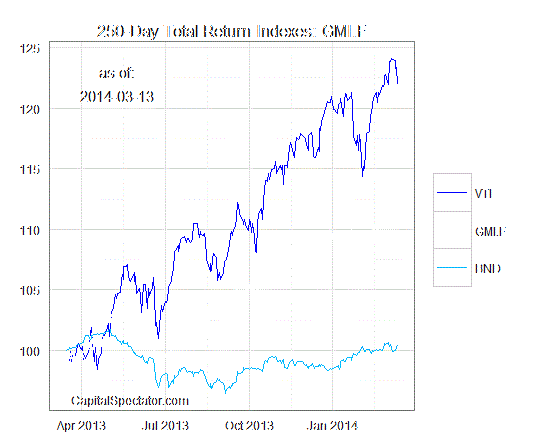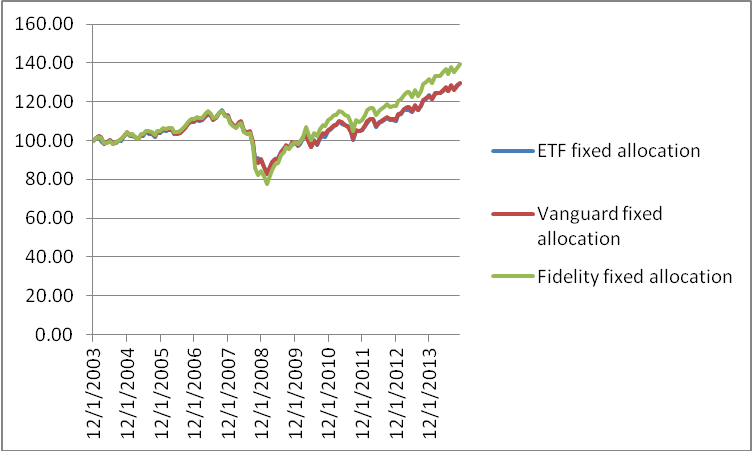ETF Investors Shouldn t Overlook Rebalancing
Post on: 1 Апрель, 2015 No Comment

ETF 101 News:
Exchange traded fund investors should adhere to a regular portfolio rebalancing schedule to diversify, manage risk and adjust market exposure.
Rebalancing periodically is a good way to maintain a well-diversified, risk-appropriate portfolio, particularly when markets are volatile, Christopher Jones, chief investment officer of Financial Engines, said in a CNBC article.
For instance, even if you have a portfolio made up of two ETFs, like the Vanguard Total Stock Market ETF (NYSEArca: VTI ) to cover the U.S. equities space andiShares Core U.S. Aggregate Bond ETF (NYSEArca: AGG ) for broad fixed-income exposure, in a traditional 60/40, stock/bond split, investors should still adjust holdings if the percentages begin to significantly skew away from their intended portfolio weights.
If left as is, stock and bond allocations can diverge from an investors target weights, especially as time drags on. Specifically, an investor may be overweight equities after the sustained rally in stocks since 2009. Consequently, due to the greater tilt toward equities, an investor would be exposed to greater risk relative to a portfolio with greater fixed-income exposure. Consequently, rebalancing requires investors to sell winners and buy the losers. [Managing Valuation Risk by Rebalancing ]
When the market is performing well, there can be a temptation to ride winners, but doing so means you could be taking on more risk than you had originally planned, Jones added.
According to Morningstar data, a portfolio with 60% exposure to the S&P 500 and 40% to government bonds generated almost 15% total return between January 2004 and December 2013 if rebalanced annually – total equity and fixed-income weights are brought back to 60% and 40%, respectively. However, that same portfolio would have returned 7.5% if left completely untouched. [Don’t Forget to Rebalance Your ETF Portfolio ]
Advisors and investors can follow two different rebalancing strategies: rebalance based on the calendar or rebalance on thresholds.

William Bernstein, the author of The Investors Manifesto, argues that the average investor should at the very least incorporate a calendar-based rebalancing schedule, which requires readjustments on a predetermined date, such as every quarter, year or couple of years.
Others suggests rebalancing based on a threshold, pointing out that rebalancing on a predetermined schedule may have an investor buying into the start of a bearish turn or sell at the start of a strong rally. Instead, an investor following a threshold-based rebalancing plan would adjust allocation for a specific asset class if it drifts a couple of percentage points above or below the target. However, Bernstein warns that this method is more complex and requires constant monitoring to keep the threshold in check.
For more information on investing with ETFs, visit our ETF 101 category .
Max Chen contributed to this article .
The opinions and forecasts expressed herein are solely those of Tom Lydon, and may not actually come to pass. Information on this site should not be used or construed as an offer to sell, a solicitation of an offer to buy, or a recommendation for any product.














